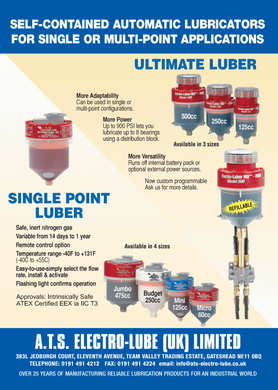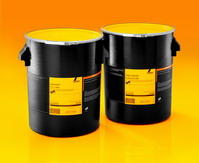
Rolls-Royce has been highly satisfied with the use of lubricants made by Klüber for their low-pressure hydraulic motors for deck machinery, and consequently recommends them to their customers: The Klüber product GRAFLOSCON B-SG 00 Ultra is to be used for running in the tooth flanks, while Klüberfluid C-F 3 Ultra is recommended for subsequent operational lubrication.
The adhesive lubricants developed for open gears by Klüber Lubrication meet the demanding requirements of anchor handling winches and have proven successful on such vessels for many years. A further benefit is that the company offers a comprehensive range of priming, running-in, operating and repair lubricants. Klüberfluid, for example, is a series of highly viscous, transparent adhesive lubricants enabling a long component life by protecting tooth flanks reliably against wear and corrosion. The fluids' good adhesion and specific formulation make for long relubrication intervals and hence a tangible reduction of operating costs.
Moreover, disposal of these lubricants after use is unproblematic since they are free of bitumen, heavy metals, solvents or chlorine. Also, the quantity of Klüberfluid required for reliable lubrication is up to 50 percent lower than with operating lubricants containing graphite. All this results in considerably lower costs for the user, based on the products' high efficiency, eco-friendliness and the lower disposal costs.
.jpg) The emergence of onboard sensor technology and usage is clearly at hand and ever expanding. Sensors represent a dynamic, long-term paradigm shift in the way oil is and will be analyzed. Tracing the history of oil analysis will help us understand how this came about and, perhaps, where it might lead.
The emergence of onboard sensor technology and usage is clearly at hand and ever expanding. Sensors represent a dynamic, long-term paradigm shift in the way oil is and will be analyzed. Tracing the history of oil analysis will help us understand how this came about and, perhaps, where it might lead.
 Oil level indication is a vital part of any system and requires a quick and simple checking procedure. Ideally a quick visual sight check during other regular maintenance
Oil level indication is a vital part of any system and requires a quick and simple checking procedure. Ideally a quick visual sight check during other regular maintenance 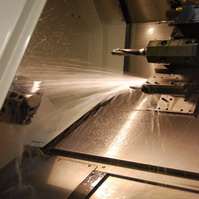

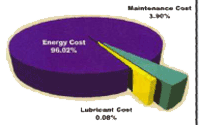 Industry in general is still to wake up to the full energy saving potential of enhanced lubricant technology, perhaps because energy saving synthetic lubricants are perceived as expensive, compared to traditional mineral oils. Justification for increased expenditure on lubricants can be difficult, as lubricants are often viewed as a maintenance cost, while energy is seen as an operating cost.
Industry in general is still to wake up to the full energy saving potential of enhanced lubricant technology, perhaps because energy saving synthetic lubricants are perceived as expensive, compared to traditional mineral oils. Justification for increased expenditure on lubricants can be difficult, as lubricants are often viewed as a maintenance cost, while energy is seen as an operating cost.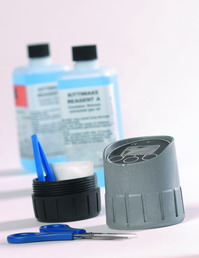 Condition monitoring of fuels and lubricants used in industrial plant and equipment has become one of the main weapons in the fight to reduce premature failure of engines, gearboxes and hydraulic systems. In particular, determining the presence of water or the gradual degradation of the TBN (Total Base Number) of the engine oil can be one of the first indicators of potentially expensive and possibly catastrophic failure of the plant.
Condition monitoring of fuels and lubricants used in industrial plant and equipment has become one of the main weapons in the fight to reduce premature failure of engines, gearboxes and hydraulic systems. In particular, determining the presence of water or the gradual degradation of the TBN (Total Base Number) of the engine oil can be one of the first indicators of potentially expensive and possibly catastrophic failure of the plant. Implementing an oil analysis sampling frequency strategy is fundamentally an identical process whatever the industry. However, this leads to the perception that the implementation is a
Implementing an oil analysis sampling frequency strategy is fundamentally an identical process whatever the industry. However, this leads to the perception that the implementation is a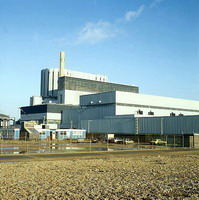 When Sovereign Lubricants & Seals were approached by a major UK nuclear power generation provider to supply an anti-seize for use on site to prevent stress corrosion cracking of stainless steel alloys and for use as a general grease for maintenance use there was no hesitation in recommending an immediate solution to this age old problem.
When Sovereign Lubricants & Seals were approached by a major UK nuclear power generation provider to supply an anti-seize for use on site to prevent stress corrosion cracking of stainless steel alloys and for use as a general grease for maintenance use there was no hesitation in recommending an immediate solution to this age old problem.  We change a lot of oil in our plants, mills, mines and factories. What are we doing to change our lubrication culture? In their book Learning to Fly, Collison and Parcell, employees of British Petroleum (BP), suggest a predictable pattern in achieving sustained culture change, which is a function of effort and time (Figure 1).
We change a lot of oil in our plants, mills, mines and factories. What are we doing to change our lubrication culture? In their book Learning to Fly, Collison and Parcell, employees of British Petroleum (BP), suggest a predictable pattern in achieving sustained culture change, which is a function of effort and time (Figure 1).